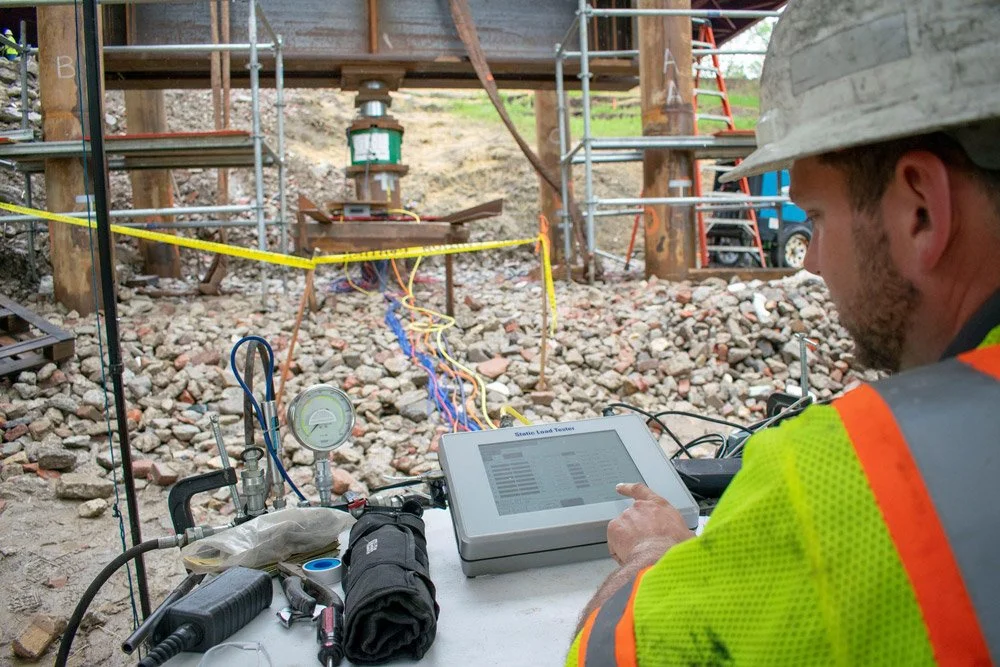
Pile Static Loading
Why do most pile designers prefer PDA over Pile Static Load Test?
Within the last few decades, the usage of pile static load testing has been continuously reduced in favor of dynamic testing. Some of the reasons are:
Static loading of a pile is far more expensive than dynamic testing.
A proper static test requires a difficult setup which potentially disturbs the ongoing piling activities on a project.
Static testing in offshore projects requires extra preparations. For example, the installation of reference beams in offshore conditions could be a real challenge.
It needs a longer time to setup so cannot be done at the End-of-Drive and the time effects on driven pile capacity, such as Setup or Relaxation, are not properly evaluated with the static method.
A normal static load test only provides a load-settlement graph which then needs to be interpreted to obtain geotechnical capacity. In contrast, PDA+CAPWAP provides critical information on shaft resistance distribution, pile structural integrity, and hammer performance.
After 4 decades of worldwide usage, there is high confidence in the accuracy of PDA results, IF undertaken by proper equipment and certified PDA testers.
The safety risks of Static Load Testing are much higher than PDA tests.
What Constitutes a Good Pile Static Load Test?
If for any reason, a pile static loading test is specified, the below concerns should be properly addressed:
The safety of the loading platform must be addressed properly.
The distance of reaction piles from the testing pile is important for the reliability of test results. According to ASTM, a clear distance of 5 diameters is necessary to assure the tested pile frictional behavior is not affected by surrounding piles.
Reference beams for attaching settlement reading apparatus must be installed free from the loading platform or reaction piles. This could be a real challenge in offshore conditions.
Settlement readings are preferred to be measured and recorded automatically to assure safety and accuracy.
According to the ASTM suggestions, secondary data reading equipment should be provided to cross-check the initial reading system accuracy and ensure a backup reading system in case anything goes wrong.
Static Load Tester (SLT)
The Static Load Tester (SLT) offered by Pile Dynamics Inc. automatically obtains and records reliable readings at programmable load intervals during a static load test. The system allows for the monitoring of up to 16 independent channels taken from traditional pile-top measurements or from embedded sensors from each data acquisition box. Many boxes can be connected to the Static Load Tester at once. Automatic data collection and display allow real-time monitoring, analysis, and interpretation of results. Visit the SLT product page for more information.
PDM³
PDM³ simultaneously monitors the movement of over 20 targets on a pile. So it could reliably be used as a secondary measurement system for pile static loading tests. For offshore conditions in which the procurement of reference beams could be a challenge, a PDM³ device sitting on a single stable platform could even act as the primary measurement system and prevent troubles of reference beams. Visit the PDM³ product page for more information.



